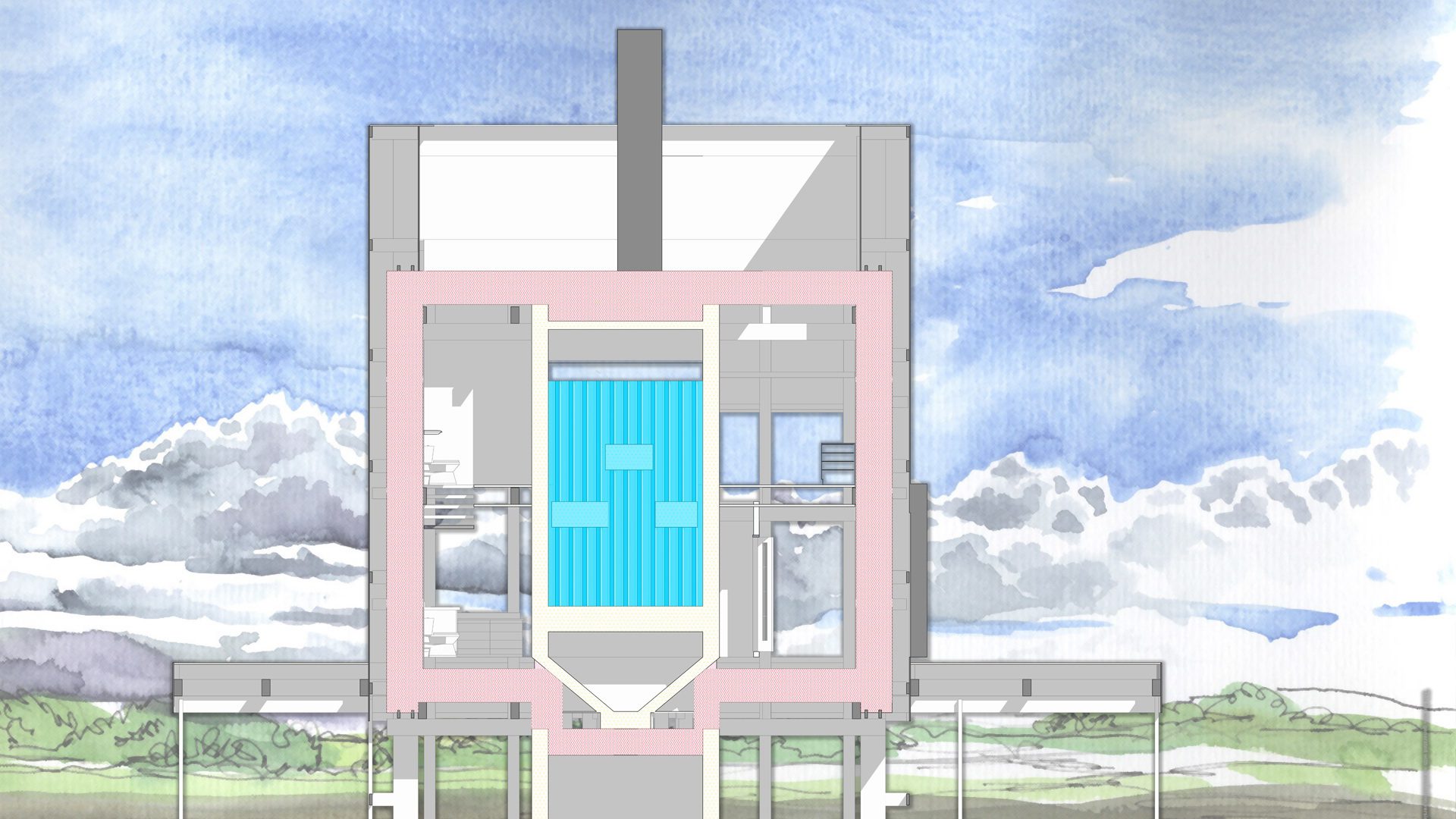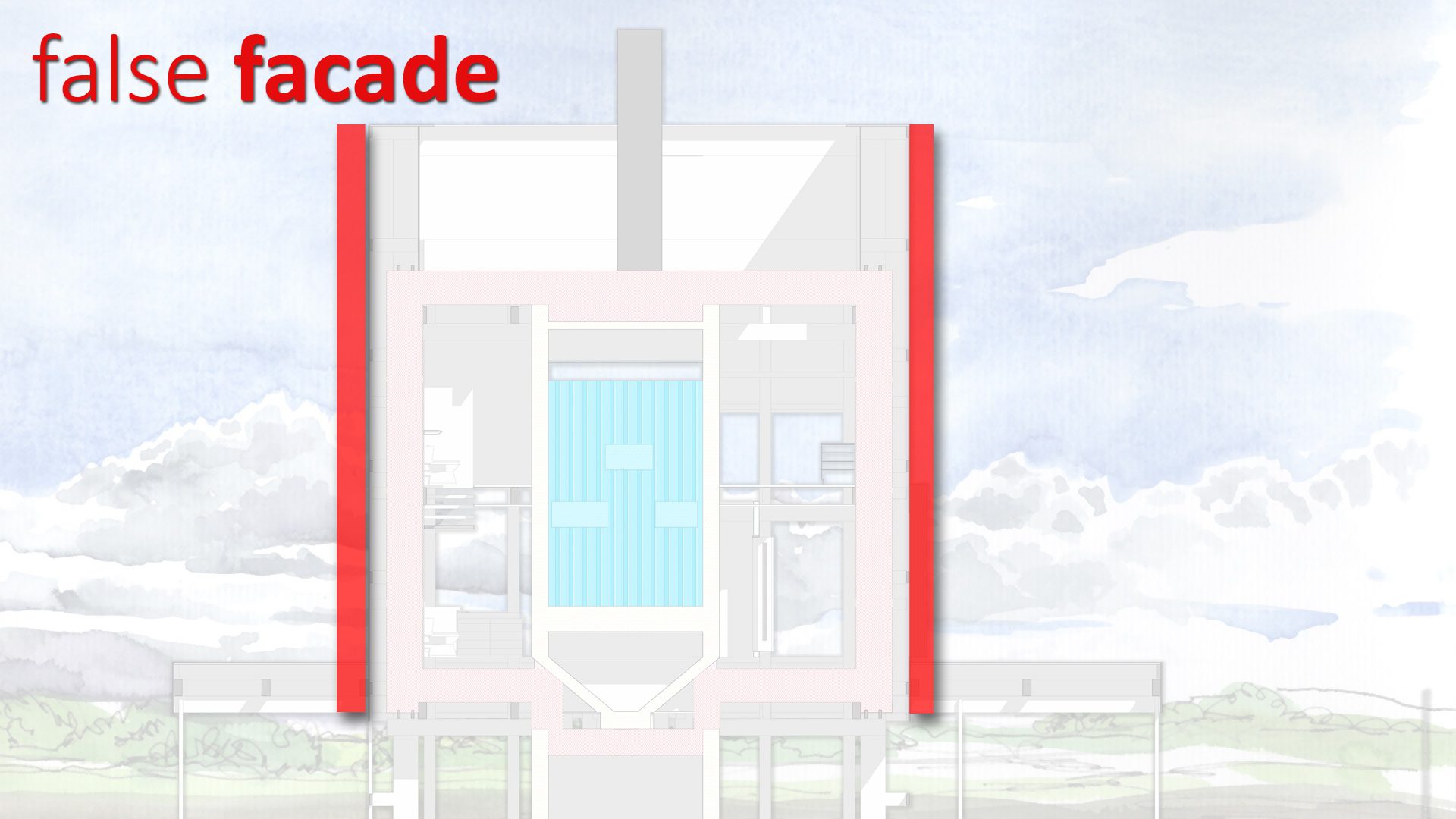Spring and autumn | mold, water vapors, or heavy rain in the jungle. Cold winds and endless heavy rains shouldn’t cause any problems. The water droplets won’t manage to get to the insulation. Normal houses accumulate a large amount of water in the cold seasons. That’s not the case with our homes. The so-called “chimney” has air moving within its “walls”.
At the slightest temperature difference the air starts to move. This way the false facade gets the air moving from both sides. The insulation is then dried within the niche and so mold will not form. We can even build the house on a lake. The extra water droplets won’t cause any problems.
By closing the upper part we can achieve the following. The hot air collected will start to accumulate on the upper part of niche. Meanwhile the cold “particles” will fall down. It’s a kind of hybrid greenhouse effect.
The wind cools down the facade and the sun heats it up. Basically we let them fight their battle on the “outside”. We help the “fight” by opening and closing the vents. We’ll do it with an Arduino based system. We don’t fight nature … we use it for our advantage.
Winter wonderland insulation | “overkill” of the “overkill”. If you are not in Alaska, Norway or the arctic regions then the following method it’s a complete overkill. This technique is for extreme and constant cold temperatures. In case you don’t have penguins and seals playing freely in the nearby park then you don’t need it. Seriously. That’s an overkill of an overkill.
Buy a few hundred meters of the cheapest rigid tubes with 2-3cm diameter and put them in the ground or in a lake. Not in the underground lake that we use for food. Do not use garden hose. It’s too thick and it insulates. You want heat transfer going quite fast.
Buy the rigid tubes that people use for electric cables. The smaller the diameter better it works. Pump air in the tubes underneath the earth (or water) and on the other end let the air escape in the false facade.
While on the outside is -20C with strong winds and blizzards you’ll accumulate “hot” air heated by the earth. You might raise the temperature in the niche as high as 0-5C. This might mean a 20-25C difference in temperature.
For a cost of a few cheap air pumps and cheap tubing it’s quite a good deal. In case your fancy …and you buy the tesla battery (hyperlink) and some cheap solar panels from china/ www.alibaba.com then you could run the pumps 24/7 for free. There are techniques to eliminate the water droplets. We’ll speak about that in other articles.
Additional benefits. The snow, humidity won’t get into the insulation. None of the humidity will accumulate overtime in the insulation. Note that you have to close the upper and lower part of the niches of the false facade. Sunlight in daytime it’s an extra help to store some heat.
Initial investment | hacking cold. Nobody uses 40-50-80 cm insulations because it sounds insane and it would cost a fortune. Not just the insulation but the structure itself would cause the big problem. Basically that would double the structure to hold the panels and insulation on both sides. The distance would be 80-100cm.
Choosing this extra system (implementing the pipes) would help to lower the thickness of the insulation. Not just the lack of insulation would lower the initial cost. The structure itself would be much cheaper.
Just think about it. Usually a structure moves between 20-40cm in width. You won’t double the frame and will be able to go with the “thin” wall. In design stages the energy evaluation programs would help us decide. There is no absolute rule here.
Extra info: Polystyrene and mineral wool are not behaving that great in real cold weather. Pick these materials instead.




